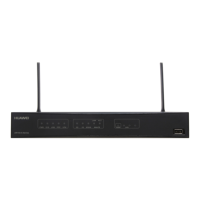<RouterA>
Step 7 Verify the configuration.
# View the logs that are output through the channel.
<RouterA> display info-center
Information Center: enabled
Log host:
Console:
channel number: 0, channel name: console
Monitor:
channel number: 1, channel name: monitor
SNMP Agent:
channel number: 5, channel name: snmpagent
Log buffer:
enabled
max buffer size: 1024, current buffer size: 512
current messages: 204, channel number: 4, channel name: logbuffer
dropped messages: 0, overwritten messages: 0
Trap buffer:
enabled
max buffer size: 1024, current buffer size: 256
current messages: 256, channel number: 3, channel name: trapbuffer
dropped messages: 0, overwritten messages: 29
Logfile:
channel number: 9, channel name: channel9, language: English
Information timestamp setting:
log - date, trap - date, debug - date
Sent messages = 1514, Received messages = 1514
# View the received logs on the FTP server. (The display is omitted here.)
----End
Configuration Files
#
sysname RouterA
#
info-center source IP channel 9 log level warning
#
interface Ethernet1/0/0
ip address 10.2.1.1 255.255.0.0
#
ip route-static 10.1.0.0 255.255.0.0 10.2.1.2
#
return
2.7.2 Example for Outputting Logs to Log Hosts
This section describes how to output logs of different modules or severity levels to different log
hosts, and how to configure backup log hosts.
Networking Requirements
As shown in Figure 2-5, logs of multiple types and severity levels must be output to different
log hosts through information channels.
Router sends the logs (with a severity level as notification) generated on the Forwarding
Information Base (FIB) module and the IP module to the log host Server 1. Server 3 functions
as a backup router of Server 1.
Huawei AR150&200 Series Enterprise Routers
Configuration Guide - Device Management 2 Information Center Configuration
Issue 02 (2012-03-30) Huawei Proprietary and Confidential
Copyright © Huawei Technologies Co., Ltd.
37

